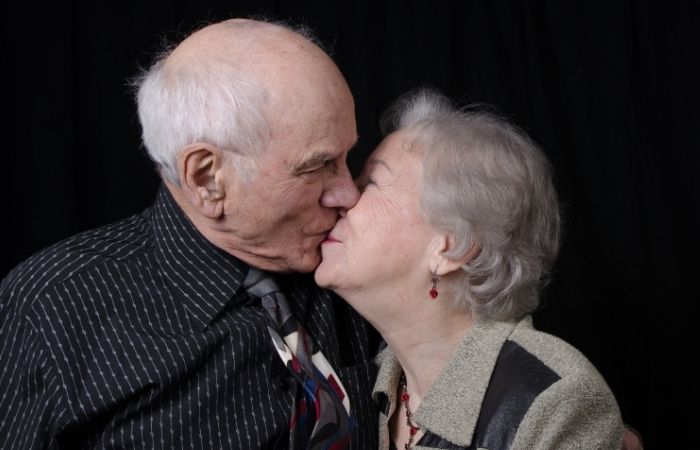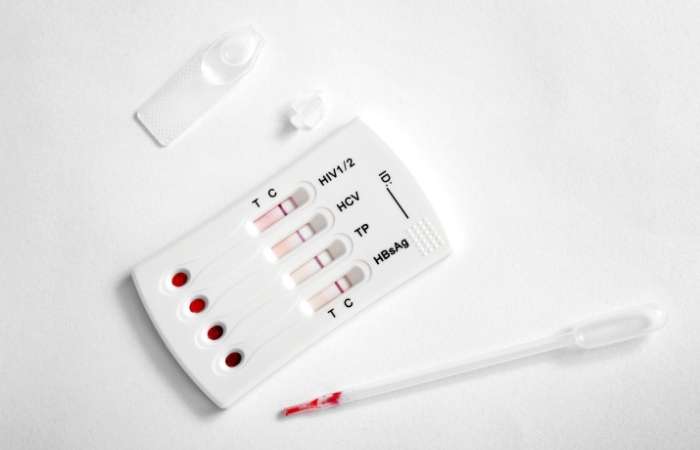Quick Answer: Yes, several STDs, including Herpes (HSV-1), Syphilis, Gonorrhea, and Cytomegalovirus (CMV), can be passed through kissing. Most spread via saliva, skin-to-skin contact, or oral lesions. Risk is highest with open sores, deep kissing, or concurrent oral sex.
Let’s Start With the Science: Yes, It’s Possible
It sounds like an urban legend, until you look at the data. According to the CDC and peer-reviewed research:
- Herpes (HSV-1): Over 67% of the global population has oral herpes, often caught in childhood, but it can still be transmitted via kissing later in life.
- Gonorrhea: Oropharyngeal gonorrhea (throat infection) is on the rise and has been traced to kissing in multiple studies, especially among men who have sex with men.
- Syphilis: Active syphilitic sores in or around the mouth can pass the infection directly through saliva or contact with open skin.
- Cytomegalovirus (CMV): A lesser-known virus that can be passed through kissing, and especially dangerous for pregnant people or immunocompromised individuals.
- Mono (EBV): “The kissing disease” isn’t an STD in the strictest sense, but it spreads the same way and can cause serious fatigue and sore throat.
You don’t need oral sex, genitals, or penetration for transmission to happen. All it takes is saliva, skin contact, and timing. And no, protection like condoms won’t help here, because lips and tongues don’t wear latex.
“I was shocked when my doctor said I had oral gonorrhea,” says David, 32. “We only kissed. I thought I was being careful.”
Kissing isn’t “dirty.” It’s intimate. But it’s also biological, and it deserves the same safety talk as any other form of sex.

People are also looking for: Traveling and Sexual Health: Staying Safe Abroad
STD by Kiss? Here’s What That Looks (and Feels) Like
If you’ve got something strange going on in your mouth or throat, and all you’ve done is kiss someone lately, don’t rule out an STD. Here’s what each kissing-related infection can look like:
- Herpes (HSV-1): Tingling lips, small fluid-filled blisters (usually around the mouth), crusty scabs, or recurring outbreaks in the same spot.
- Gonorrhea: Sore throat, swollen tonsils, mild fever, bad breath, or no symptoms at all.
- Syphilis: One painless ulcer or “chancre” on the lip, tongue, or inside the mouth that disappears after a few weeks (but the infection remains).
- CMV: Mild sore throat, swollen glands, fatigue, often confused with mono or flu.
- Mono (EBV): Intense fatigue, white patches on tonsils, swollen spleen, long recovery period.
And then there are the mouth ulcers, weird bumps, sore spots, and throat irritations that don’t quite make sense. Many of these get brushed off, or misdiagnosed. But if you’ve kissed recently and you’re not feeling right, your mouth may be telling you something.
“I thought it was strep,” says Alejandro, 27. “But my test came back positive for gonorrhea, in my throat.”
You don’t have to feel gross. You just need to know what to look for.
Why No One Talks About This (But Should)
We’ve been trained to think STDs come from “real sex.” The kind with penetration. The kind you “should’ve known better” about. But kissing? That’s supposed to be safe. Sweet. Innocent.
So when someone finds out they got herpes, or syphilis, from a makeout? Shame hits harder. Because it feels like it came out of nowhere.
The truth? Kissing as an STD transmission route is real, under-discussed, and under-diagnosed. And that silence keeps people from getting tested, treated, and informed.
This matters even more for queer, trans, and nonbinary folks, whose sexual scripts don’t always involve “traditional” intercourse. Kissing, oral, mutual touch, these are all valid ways of connecting. And they come with risks too.
We’re not here to scare you. We’re here to protect you, with facts, not fear.
“I wasn’t ready for sex, so we just kissed a lot. I ended up with HSV-1. I had no idea that was even possible,” says Morgan, 19.
You don’t need to be celibate to stay safe. You just need to be informed.
Check Your STD Status in Minutes
Test at Home with Remedium7-in-1 STD Test Kit

 For Men & Women
For Men & Women Results in Minutes
Results in Minutes No Lab Needed
No Lab Needed Private & Discreet
Private & DiscreetOrder Now $129.00 $343.00
For all 7 tests
Let’s Bust the Biggest Myths About Kissing and STDs
Still skeptical? Totally fair. Here are some of the most common myths we hear, and what the science actually says.
“You can’t get an STD from just kissing.”
False. HSV-1, gonorrhea, syphilis, CMV, and even HIV (in rare cases with bleeding gums) can all pass through kissing under the right conditions.
“Cold sores aren’t that serious.”
Cold sores = herpes. And while common, they can still be painful, recurring, and contagious even when you don’t see them.
“If I don’t have symptoms, I’m fine.”
Wrong. Oral gonorrhea and CMV often show zero symptoms, but can still spread to others.
“Only people who are ‘promiscuous’ get STDs.”
Total BS. One kiss. One partner. One night. That’s all it takes. STDs don’t care about your body count.
“If it’s in the mouth, it’s not a real STD.”
Also false. Oral STDs are medically recognized, and they can lead to real health complications, including cancer in some HPV cases.
Why Oral STDs Go Undiagnosed (Even by Doctors)
Here’s the uncomfortable truth: most doctors don’t swab your throat for STDs unless you ask. And even then, some might dismiss your concerns, especially if you “only kissed” or didn’t have what they consider “real sex.”
This gap in screening leads to silent infections. Oral gonorrhea and syphilis can live in the throat, mouth, or tonsils without showing obvious symptoms. You could carry it, pass it, and never know.
Here’s why oral STDs get missed so often:
- Standard STD tests don’t include oral swabs unless specifically requested
- Symptoms mimic other illnesses like strep, allergies, or ulcers
- Bias and stigma, some providers don’t ask detailed questions about oral contact, especially with queer patients
- Self-doubt: Many people don’t believe kissing could be risky, so they don’t bring it up
“My sore throat lasted two weeks. My doctor gave me antibiotics, but didn’t test me for anything else. I had to go to a clinic and ask for an oral gonorrhea test myself,” says Liam, 25.
You are allowed to advocate for your own testing. Whether it’s at a clinic or from the privacy of your home, don’t let gatekeeping stop you from getting answers.
STD Rapid Test Kits offers at-home solutions for STI screening that skip the awkward questions and clinic delays.

People are also looking for: The Basics of At Home Herpes Test Kits
What Increases Your Risk (And What Doesn’t)
Not every kiss is high risk. But some things can raise your chances of picking up (or passing on) an oral STD. It’s not about judging your sex life, it’s about understanding the variables.
Here’s what can increase your risk:
- Visible cold sores: Active HSV-1 lesions are highly contagious, even before they crust over
- Deep, prolonged kissing: The more saliva exchanged, the higher the potential viral load
- Open cuts or sores: Mouth ulcers, bleeding gums, or dental work can provide viral entry points
- Concurrent oral sex: Going from kissing to oral without barriers increases cross-contamination risk
- Multiple partners in a short time: Statistically, exposure risk rises with frequency and variety
And here’s what doesn’t put you at serious risk:
- Pecks or closed-mouth kissing: Lower saliva exchange = lower transmission likelihood
- Sharing food or drinks: Not a common route for STDs (though cold and flu viruses still spread this way)
- Being around someone with an oral STD: No skin-to-skin contact, no risk
This isn’t about paranoia, it’s about pattern recognition. Knowing the higher-risk behaviors means you can make choices that fit your comfort level without swearing off intimacy altogether.
You Can Still Kiss, Just Kiss Smarter
Let’s be clear: kissing isn’t canceled. You’re allowed to want connection. You’re allowed to enjoy making out with someone you just met. This isn’t about moralizing, it’s about minimizing harm while still having pleasure.
If you want to kiss with less risk:
- Don’t kiss during active cold sore outbreaks, that’s herpes transmission waiting to happen
- Brush and floss gently, avoid creating small cuts that make infection easier
- Avoid kissing if either of you has unexplained sores, bumps, or oral discomfort
- Have open conversations with partners, ask about cold sores, recent throat issues, or other exposures
- Get tested regularly, and opt for oral swabs when you do, especially if kissing or oral is a regular part of your sex life
Kissing is intimate. It’s vulnerable. It’s beautiful. And it deserves protection just like any other sexual act. You shouldn’t have to choose between safety and connection, you can have both.
Check Your STD Status in Minutes
Test at Home with Remedium3-in-1 STD Test Kit

 For Men & Women
For Men & Women Results in Minutes
Results in Minutes No Lab Needed
No Lab Needed Private & Discreet
Private & DiscreetOrder Now $69.00 $147.00
For all 3 tests
FAQs
1. Can you really get an STD from kissing?
Yes. Infections like herpes (HSV-1), oral gonorrhea, syphilis, and CMV can be transmitted through kissing, especially if open sores or oral contact are involved.
2. What STDs are most commonly spread through kissing?
The most common are HSV-1 (oral herpes), syphilis (if a sore is present), gonorrhea (in rare but documented cases), and cytomegalovirus (CMV). Mono is also often called “the kissing disease.”
3. Can you get herpes from someone with no visible cold sore?
Yes. Herpes can shed even when no sores are visible, this is called asymptomatic viral shedding, and it’s a major reason it spreads unknowingly.
4. Is throat gonorrhea really from kissing?
Studies suggest deep kissing can transmit oral gonorrhea, especially in high-exposure populations. Oral sex remains a more common route, but kissing is not risk-free.
5. Do condoms or dental dams protect you when kissing?
No. These barriers don’t cover the lips or mouth, so they don’t help with kiss-based transmission.
6. Can you tell if someone has an oral STD just by looking?
Often, no. Many oral STDs cause no visible symptoms or look like harmless things (e.g., canker sores, throat irritation).
7. How can I lower my risk when kissing?
Avoid kissing during outbreaks, communicate with partners, and consider getting tested regularly. Be cautious with deep kissing if someone has unexplained oral symptoms.
8. Is CMV a sexually transmitted infection?
CMV isn’t classified as an STD but can spread through kissing, sex, or saliva. It’s risky for people with weakened immune systems or those who are pregnant.
9. Can I get an STD from kissing once?
Yes. It only takes one exposure if the virus is active and conditions are right (e.g., sores, oral contact, weakened immunity).
10. Should I get tested if all I’ve done is kiss?
If you notice oral symptoms, feel sick, or your partner has a known STD, yes, it’s smart to get tested. Better clarity, less anxiety.
You Deserve the Full Picture, Not Just the Warnings
Kissing is intimate. It’s electric. It’s human. And yes, it can also carry risks. That doesn’t mean stop kissing. It means start treating it with the same awareness you give other parts of your sex life.
No one teaches us this stuff. But we’re teaching ourselves now, because knowing how STDs really spread helps us ditch the shame, stay safe, and still have great sex (or great makeouts).
If something doesn’t feel right in your mouth or throat, don’t wait for it to get worse.
Sources
1. CDC – Genital Herpes – Fact Sheet
2. PubMed – Oropharyngeal Gonorrhea from Kissing










